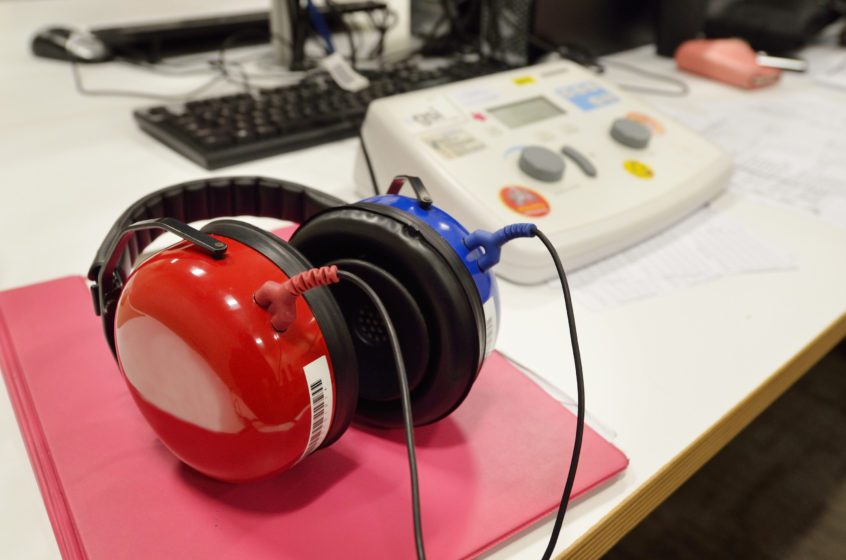Your hearing is as unique as you are, like a fingerprint. Though problems hearing may fall into general categories, hearing aids, which are usually prescribed to treat hearing loss, are not one-size-fits-all solutions. Instead, hearing aids should be prescribed and programmed to address your needs, including your lifestyle and budget.
But where do you start to get a customized solution for your hearing loss?
- Select a professional audiology practice that follows best practices in the industry and puts patients first. An audiologist is a doctoral-level professional who specializes in the diagnosis and non-medical treatment of hearing loss, tinnitus and balance disorders.
Audiologists receive extensive education in hearing and balance disorders. These professionals have earned postgraduate masters and/or doctoral degrees. A doctoral degree is now required for graduates practicing after 2012. Look for the initials Au.D., (Doctor of Audiology – clinical degree); or Ph.D. (Doctor of Philosophy – research and/or clinical research degree); to designate doctoral training.
Many audiologists, including all of the audiologists with Associated Audiologists, also have earned a Certificate of Clinical Competency in Audiology, indicated by the initials CCC-A after their names. This is a voluntary certificate issued by the American Speech-Language-Hearing Association (ASHA). Professionals who have been awarded the CCC-A have completed a rigorous academic program and a supervised clinical experience and have passed a national examination.
- Have a comprehensive hearing evaluation performed by a doctoral-level audiologist. For accuracy, a diagnostic hearing evaluation should be conducted in a sound-treated room using special earphones and equipment that has been calibrated to national standards. The hearing evaluation begins with a thorough discussion about your symptoms, medical history, medication review and any other concerns you may have. After this evaluation, which usually takes an hour or longer, the audiologist will review their findings with you.
- Your hearing evaluation should include an audiogram. An audiogram is a graph showing the results of your hearing test. It will show how loud different sounds need to be at different frequencies for you to hear them and serves as the “blueprint” for your hearing prescription.
- Based on the results of your hearing evaluation, your audiologist will make recommendations for technology that addresses your specific hearing loss, lifestyle and budget. Because many hearing aid options are available today, your choices may range from entry-level hearing aids to hearing aids equipped with Bluetooth connectivity, directional microphones, rechargeable hearing aids and “smart” technology that even allows you to use an app to customize some of the features of your hearing aids yourself.
- Once you receive your new hearing aids, be sure the audiologist performs a real-ear measurement. This is key to getting the best hearing aid fit and performance, no matter how sophisticated the technology. Only about 30 percent of audiologists in the U.S. invest in the technology necessary to perform a real-ear measurement and take the time to do so.
At Associated Audiologists we use specialized diagnostic and verification equipment, including real-ear probe microphone and speech mapping measures. This technology is considered a best practice among industry leaders.
A real-ear test, also called a real-ear measure, involves placing a thin probe microphone in your outer ear while you wear your hearing aids to measure whether they are responding appropriately to your level of hearing loss. Your audiologist also should test understanding of speech in both quiet and noisy areas, too.
These tests are performed using a probe-microphone and real-ear measurement software, with the results showing graphs of what your hearing aid prescription should be compared to how well your hearing aids are actually performing.
These results are not estimates or general measurements. They are measurements depicting the real-ear output of the hearing aid for the specific individual. This comparison helps the audiologist make precise adjustments that can have a significant impact on your listening experience, ensuring that your hearing aid is programmed exactly for your hearing loss.
Bottom line—real-ear testing enables measurement of the sound delivered by a specific hearing aid in the ear canal of a specific individual. It helps fine-tune your hearing aid prescription to your precise needs.
Be sure to ask your audiologist to perform real-ear measurements and speech mapping performance when your hearing aids are fit, and when recommended at follow-up appointments. This will ensure you get the most from today’s sophisticated digital technology.
And to be certain that you continue to benefit from your hearing aids, schedule regular check-ups, usually every six to eight months, and have your hearing aids cleaned and checked. You should also update your hearing test every 18 to 36 months.
Get a hearing solution customized just for you. Schedule an appointment.



